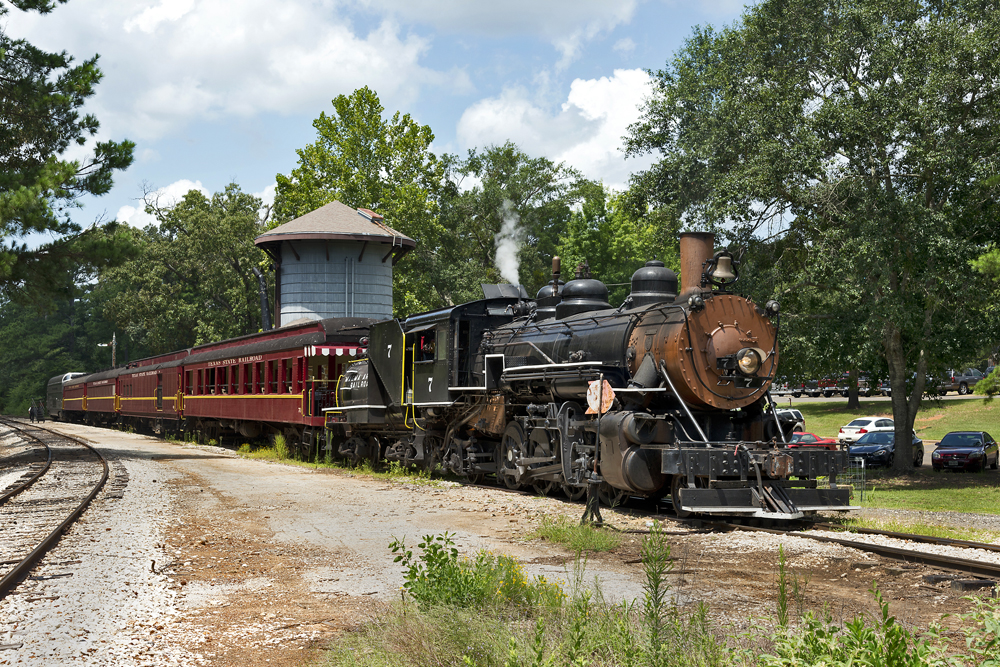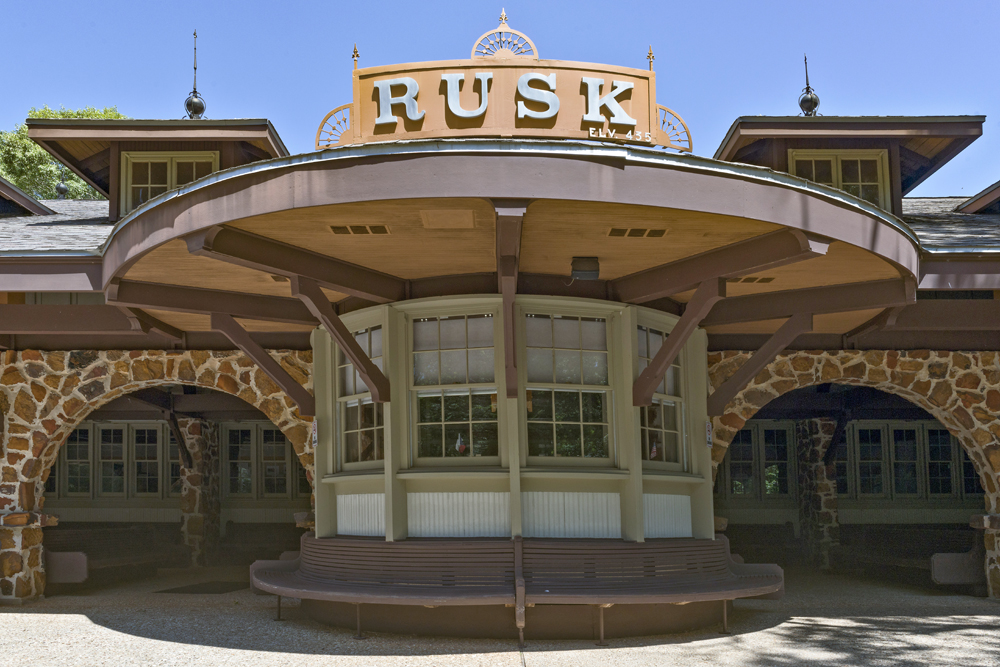Lone Star heritage railroad

Are you looking for something different, yet familiar? Consider a visit to the Texas State Railroad, where you’ll experience a classic mix of mid-20th century railroading and a pleasant 4-hour train ride.
The Texas State Railroad is aptly named. It was built as a state project in the late 19th century. Initially, it served as an industrial railroad built and maintained by the prison system hauling iron products manufactured at the state smelter in Rusk using inmate labor.
In the early years of the 20th century, the railroad was transformed into a state-run common carrier and expanded to Palestine, where it connected with the Missouri Pacific. In the 1920s, the railroad was leased to Southern Pacific affiliate Texas & New Orleans. By the 1960s, T&NO ended its operation, and the railroad was at best marginally profitable. As the freight business declined, the state moved to develop the property.
In the 1970s, the line was conveyed to the state’s parks and wildlife department and ultimately transformed into an excursion line connecting the principal towns on the line: Palestine and Rusk. In 2007, the state began leasing the operation of the railroad and since that time a variety of operators have run historic trains here.
Since 2020, Texas State operations have been conducted by the Lone Star & Eastern, part of the Jaguar Transport Holdings family, a Joplin, Mo.-based transport company that runs a variety of shortline railroads.
Houston-based railroad scholar and photographer Tom Kline says “the State Railroad is a neat little [casual] operation that is fan friendly; visitors can expect old-time Texas hospitality with a wave and toot of the whistle.”

Excursions run between the two terminal stations at Rusk on the east end of the line and Palestine on the west end, with most excursions from Palestine making an approximately 4-hour round trip while allowing for about an hour and 15-minute layover at the historic Rusk station, giving visitors time to picnic and explore the grounds.
Trains amble along through the Pineywoods of east Texas at 15-20 mph. Among the highlights of the line is the remote bridge over the Neches river. At 1,115 feet, it’s the longest of roughly 20 bridges on the route.
The excursion season typically begins in March and runs through the winter holidays. Since the railroad offers a variety of excursions and up to seven types of seating — depending on the car — passengers are advised to read the description of their train trip carefully.
One of the most desirable cars is the former Santa Fe, Budd-built, Super Dome that offers elevated panoramic views.
The railroad can be very popular and it is always a good plan to book tickets ahead of time. Also be sure to arrive at your departure station at least 45 minutes before departure to avoid disappointment, since the boarding platforms close 10 minutes before excursions are scheduled to depart.
The railroad alternately operates steam and historic diesels. In recent years, a regular runner has been locomotive No. 30, a Baldwin 2-8-2 built in 1917 for the Tremont & Gulf Railway based at Winnfield, La. In its early years at Texas State, this engine was No. 400, and has also operated as No. 7 to commemorate its years of service on the Magma Arizona Railroad.
Texas State also regularly assigns FP9s Nos. 125 and 126, both former Canadian National units, to excursions. These are painted in scheme inspired by Katy’s classic Texas Special livery, which helps give them a regional appearance. Alco aficionados will be keen to see locomotive No. 7, a rare surviving RS-2 built in 1949 and painted in black, silver, and orange to resemble a Southern Pacific/Cotton Belt unit.
Railroad headquarters are in Rusk, also the location of an engine house and shops. However, equipment is stored at both ends of the line. Among the historic equipment kept at Palestine is former Texas & Pacific Lima No. 610. Built in 1927, this significant engine was part of T&P’s pioneering fleet of 2-10-4s, a wheel arrangement named the Texas type in honor of the line. It closely resembles Lima’s original Superpower 2-8-4 Berkshire of 1924, and was one of three steam locomotives used to haul the 1970s American Freedom Train, which helped commemorate the American bicentennial.
Kline advises that photographers interested in making lineside photos will find plenty of opportunities. Highway 84 loosely follows the line and there are several easily accessible grade crossings.
“The best time to photograph is during the afternoon of the westbound from Rusk,” says Kline.
The entire line is its own state park roughly 50 to 200-feet wide — making it the narrowest in Texas, yet visitors should exercise caution and maintain a safe distance of at least 25 feet from trains in motion.
Among the excursions offered are the Dogwood Lunch Train and the Piney Woods Express trains. In the winter, try Texas State’s interpretation of The Polar Express.









